The question arose, which varnish is better to take? I bought Marabu here and was disappointed, the paint doesn’t go on very well and then the paint changes color, if it’s lilac, then reddish veins appear
Girls, tell me what varnish do you use???
Wow, I just looked around on the internet and found excellent article, though it’s already a repost, this is a forum from the Masters Fair
AGENDA:
DECOUPAGE VARNISH – WHAT IS IT?
This is what the participants of one of the forums think about this (Varnishes - decoupage and not so much? - Fair of Masters - handmade, handmade)
1... a huge number of varnishes, specifically for decoupage. To begin with, I think it's worth buying a glossy or matte acrylic varnish. It is sold in almost all artist salons. There is no smell and it dries very quickly.
There is also a glassy varnish for the final coating of the product. It is quite durable and looks beautiful on the product. By the way, you can even cover your skin with it. And it doesn’t turn yellow over time! This, by the way, is very important if the background of the product is light. There is no smell at all. Here.
It is I, and many of my colleagues, who buy polyurethane varnish at construction markets or at OBI. There are companies Dulaks and Petri. It covers items well, doesn’t have a terrible smell, and doesn’t take that long to dry—well, about a day.
I order glassy varnish from online stores. Really like. True, it’s a little expensive.
And also, I note that it is best to cover the product with several layers of varnish with intermediate drying so that the effect of the glued picture goes away. This is also very relevant for decoupage cards. The paper has its own thickness, and the varnish compares it with the surface of the product.
2. Alkyd varnishes (not water-based), when you have to wash brushes with a solvent, reduce the number of layers applied, i.e. 1 layer of alkyd replaces 2 layers of water-based varnish. The downside is the smell, but it dries and disappears quickly.
and 6 layers of varnish are not the limit, sometimes they cover 20 layers, it depends on personal tactile sensations)))))
3.-Tikkurilla Unica super varnishes - excellent!!! BUT they are only suitable for things using the aging technique, since even one layer turns a little yellow (and it says on the can - translucent, colorless), 2 layers generally give a polishing effect. Dries very quickly, smells mao, excellent grip.
NTs218 varnish eats away at the eyes, of course, BUT if you need to varnish a white product with a delicate pattern - when applied up to 20 layers - it does not give yellowness and the result is simply a glass effect!
- acrylic varnishes on water based, all the companies that I tried, if it is not glossy, then it is better not to apply more than 3 layers - it will give a noticeable dullness, even transparency is lost.
The exception is again Tikkurilla, everything is OK with them.
A mirror-like varnish surface is obtained by applying multiple layers. One coat of varnish is generally not enough. Usually the first dried varnish layer is sanded and the next one is placed on it... and so on ad infinitum until your work becomes mirror-like. That's all. As it turns out, everything is very simple, but long.
4. “Because of the terrible smell, I had to give up polyurethane varnishes and switch to acrylic (water-based).
I bought this varnish at a regular construction store and decided to try to patch the board. The more layers I put on, the more I felt like it was in vain. They became easy to press with a fingernail, although the drying time between layers was 2 hours or more (the manufacturer recommends at least an hour). As a result, after 6 layers I decided to apply the finishing coat. For this I chose water-based glass varnish from Idea. And apparently she completely ruined her board.
It lay down very unevenly, with some lumps...
What do you think - maybe I can try sanding it in a day? Or is there nothing that can be fixed?”
And how to apply it correctly finishing layer?... I don’t really like acrylic varnishes, precisely because of their unpredictability. By the way, not all polyurethane ones smell terrible. For example, Petri, water-based, is quite pleasant. And you can put as many layers as you like. Although the layer must dry for at least 8-12 hours before it finally sits on the surface. And pressing with a fingernail indicates that the previous surface was not dried properly. And by the way, all these layers of varnish are the finishing coat. Your big mistake is in the vitreous. DO NOT MIX VARNISHES ON THE SURFACE! Your result is correct - the varnish has curled. Try sanding it, of course, but after a few days, cover it with glass again. Maybe it will work out.
And if you want to be guaranteed to get a normal surface with your acrylic varnish, then leave each layer for a day! For a long time? But high quality! They applied the varnish, sanded it a day later and then the next layer for a day...
5."Do I understand correctly that Petri is water-based and can be washed off the brushes with water?
I just got tired of using white spirit ((so I switched to acrylic (+ the smell, of course)
Can't you remove the varnish completely now? "
It washes off normally. You can also wipe them with sunflower oil, and then with soap and water.
6. Pressing with a fingernail indicates that the previous surface has not been properly dried.
7. I cover the products with yacht varnish - this is final (I read somewhere) It takes a day to dry, but mine is as long as you want.
...I have a yacht POLY R. It takes a long time to dry. You can cover it no more than twice a day (naturally, the first layer does not dry out completely, it just doesn’t stick to your hands and can be sanded a little). But if you cover it too early, the previous layer will “shrink” and you’ll get these kind of waves. The varnish can be said to be self-leveling, so if the surface is flat, it goes on very smoothly, without smudges. It's yellowing terribly!!! The disadvantages include its long drying time, and it also stinks! Brushes are washed with white spirit. On the advice of one well-known decoupage artist, instead of this odorous byka, I tried soaking the brushes in sunflower oil, and then washed them in warm water with soap. Works.
8....for dishes that will come into contact with human body- DO NOT USE CONSTRUCTION VARNISHES!!! There is Porcelan varnish for glass and porcelain.
9. Varnish - parquet Poly. The varnish is wonderful, just note that it still requires final drying for at least 6 hours before applying the next layer. It is only the surface layer that dries almost instantly.
I had a case when I made a frame for an Ikea mirror, coated it in several layers with this varnish with an interval of 30 minutes between layers. So after six months the frame began to show beautiful cracks.
10. How to determine drying time and required amount intermediate coatings? What might this depend on - the surface of the product, the type of varnish or the type of napkin card?
As a rule, there is an annotation written on the packaging or jar of varnish, where it is indicated required time for it to dry. In general, by touch it is quite possible to understand whether the product has dried or not. Of course, before giving it as a gift, to be on the safe side, it is better to let it sit for at least 2 days. The varnish will definitely dry. By the way, acrylic varnish is the fastest drying.
- Each subsequent coating of the product with varnish is carried out after the previous layer has completely dried. Dries to the touch, but how many layers are determined visually. If after a single varnishing you are satisfied with the product, then there is no need to suffer. If you want the varnish layer to be more expressive, then we cover it again and again. Actually, it's a matter of taste. For example, I like it when boxes are smooth and voluminous due to several layers of varnish. Varnish gives an optical effect - it adds volume to things. But on decorative plates, it seems to me that one layer is enough.
I repeat once again that this is a matter of taste and there are no recommendations. I know decoupage artists who cover their work with 6 layers of varnish. Perhaps I’m not enough for this - I’m not the type to tinker so much with one thing. Although, I don’t accept quality products and hack work!!!
CONCLUSION: we buy varnish in a hardware store or in a special art store. We try it on a separate copy, which we wouldn’t mind throwing away.
And, if everything suits you, we create beauty!
This video is about a group of varnishes designed specifically for decoupage or decoration.
Special varnishes for decoupage (glossy, matte):
. water-based acrylic;
. dissolves in water;
. without smell;
. absolutely no yellowness;
. dry quickly;
. in tubes and small jars.
Found in specialized departments for creativity and online stores.
The purpose of using these varnishes is exclusively for decorative items, which:
. are not actively used in everyday life,
. do not come into contact with liquids.
These can be photo frames, boxes, various stands, panel, clock.
Acrylic varnishes for decoupage and decoration will reliably protect:
- Decoupage using napkin technique
- decoupage with rice paper
- decoupage with decoupage card
- decoupage with printout
- decoupage and decoration in combination with aging techniques
Technology for applying acrylic finishing varnish:
- quickly, in a thin layer, rubbing the varnish into the surface with a flat synthetic brush.
This especially applies to applying the first layer of varnish to decoupage, otherwise the surface will begin to bubble, wrinkle and stretch.
How many coats of varnish should I apply?
2 maximum 3 layers of this varnish are enough.
I suggest watching a special video that shows the technology of applying this varnish to decoupage “Decoupage: finishing varnish and “hot” gluing of the motif”
Own preferences:
Glossy and matte water-based acrylic varnishes from Gedeo. How to choose: glossy or matte varnish to apply to decoupage?
Of course, this is not just a matter of taste. Main landmark:
If the item is made in vintage style, with signs of “age” - definitely matte varnish. A thing “with a touch of time” cannot look like a polished samovar!
Main conclusions on the use of special varnish for decoupage:
- exclusively for decorative products in the interior (without active mechanical, thermal influences and without their contact with water);
- requires special care when applying decoupage using the napkin technique, especially when covering the decor with the first layer (see special video);
- if the item is made in a vintage style, with imitation of aging, then when choosing between glossy and matte varnishes, prefer a matte composition.
How to choose a finishing varnish for decoupage: yacht or parquet? Which is better?
From this article you will learn about the so-called “construction” varnishes, which are also used in decoupage. You will find answers to frequently asked and basic questions related to yacht and parquet varnishes:
What materials can decoupage be coated with “construction” varnishes?
- Which varnish is better, yacht or parquet?
- On what surfaces and what varnish is best to use?
- How to decide on the choice: glossy or matte?
This material is a description of our own practical experience using yacht and parquet varnishes in decoupage.
A group of “construction” varnishes used in decoupage:
. yacht:
. parquet:
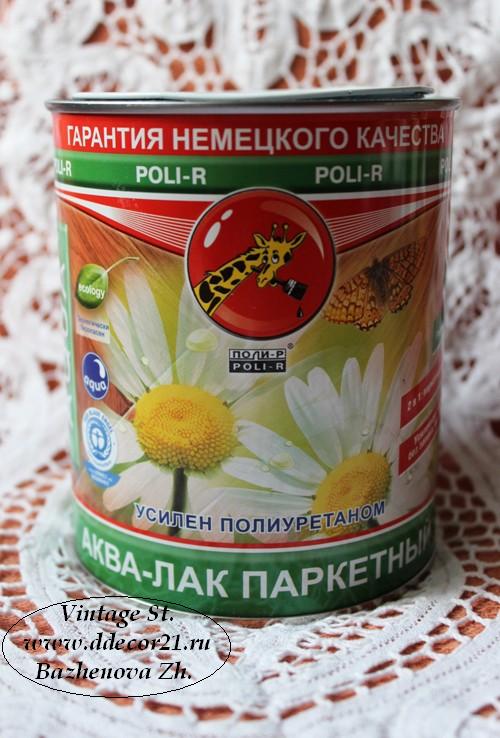
. for saunas
You can find varnishes in the construction departments of hardware stores, construction markets, etc. Hence the common name for the group of these varnishes.
In this article, compositions for saunas are not considered, but only yacht and parquet varnishes will be considered. Why? Only because I myself used only yacht and parquet varnishes for decoupage for 5 years and am confident in the final result:
Combination with other materials,
Methods of applying compositions,
Reliability and durability of the finished decoupage product.
The purpose of using “construction” varnishes in decoupage: maximum protection of the decor from moisture, mechanical and thermal damage.
Yacht and parquet varnishes are suitable for finishing decoupage:
. napkins,
. decoupage card,
. rice paper,
. printouts;
. in combination with craquelure and other aging techniques.
The compositions are especially suitable for products that are actively and often used in everyday life: boards, trays, furniture. 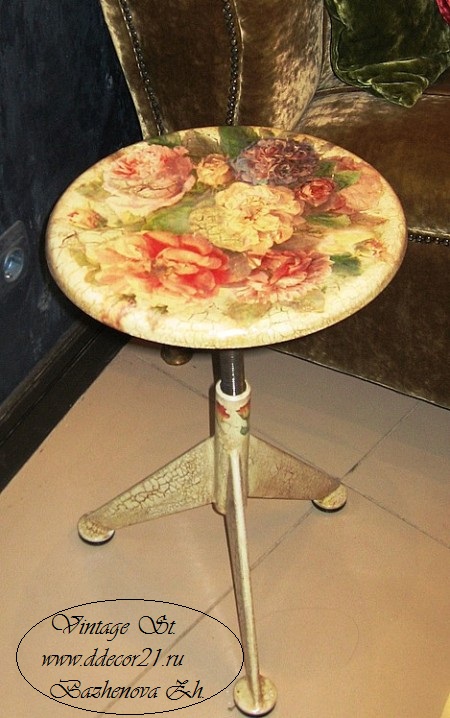
Chair for a pianist, covered with yacht varnish (decoupage with a napkin, imitation of aging made using craquelure varnish)
How many coats of varnish is best to apply?
2-3 layers of varnish are enough. Exceptions: varnishing furniture (possibly up to 20-30 layers).
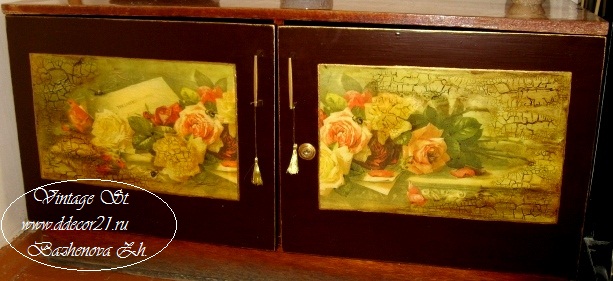
Bedside table doors covered with 20 layers of yacht varnish (decoupage with decopage cards, imitation of aging with two-step craquelure varnish)
Which varnish is still better: yacht and parquet?
To answer this question, I suggest you refer to the instructions By general purpose
these varnishes.
"...For protective and decorative treatment of parquet and wooden floors, doors, furniture, wood products indoors and outdoors."
Now let’s look at each of the compositions separately in the form of a table for greater clarity.
Comparative characteristics of yacht and parquet finishing varnishes
Thus, based on the characteristics of the two groups of construction varnishes presented in the table, it becomes obvious The answer to the first question: which varnish is better for yacht parquet?
Answer:
Yacht and parquet compositions intended for maximum protection products in everyday life, and for decoupage, both types of finishing coating are good.
However, the compositions are different. If there are differences in the choice of coating for decoupage, please note that the alkyd-urethane composition (with a smell) is suitable for interior and exterior work and has an amber tint (see photo above, where the yellowness of the varnish in a separate glass jar is clearly visible), unlike acrylic -urethane composition (odorless), which is suitable only for interior work and colorless on the surface. Here are some more guidelines for your choice of topcoat.
Guidelines in the final choice of composition can be yours answers on questions:
1. Is the product intended for indoor or outdoor use? If for a home, where will it be located? For example, a sign on front door, a planter by the door or a planter in the bathroom.
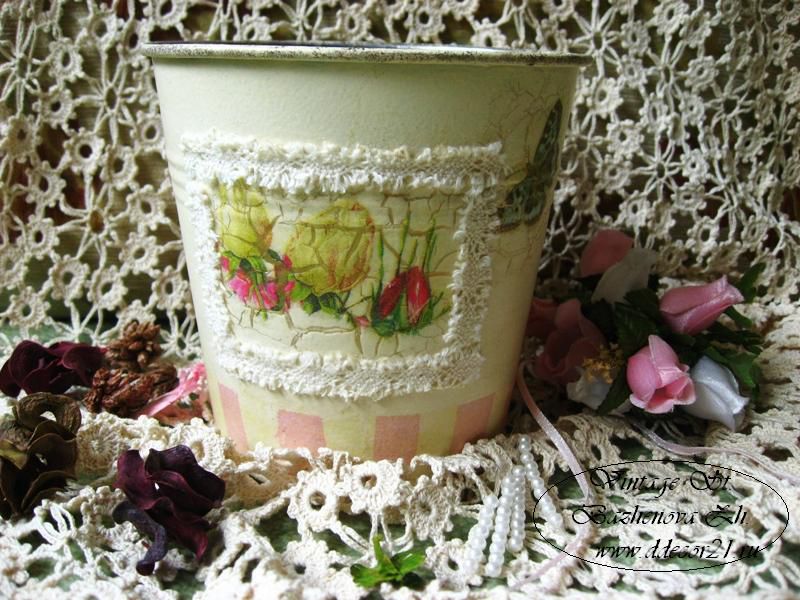
Bathroom planter coated with yacht varnish
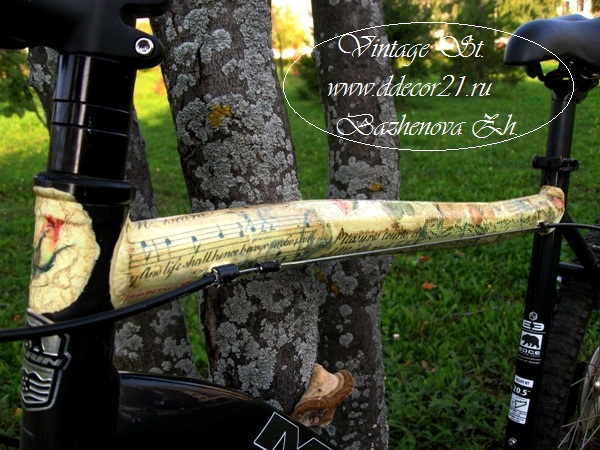
Bicycle frame covered with yacht varnish (decoupage with rice paper, imitation of aging with bitumen, craquelure)
2. The second guiding question that you ask yourself when choosing a varnish. How often will the products be exposed to hot objects or liquids? For example, frequently used boards, trays, hot stands, shelves, tray tables. Here I also prefer yacht alkyd-urethane varnish.
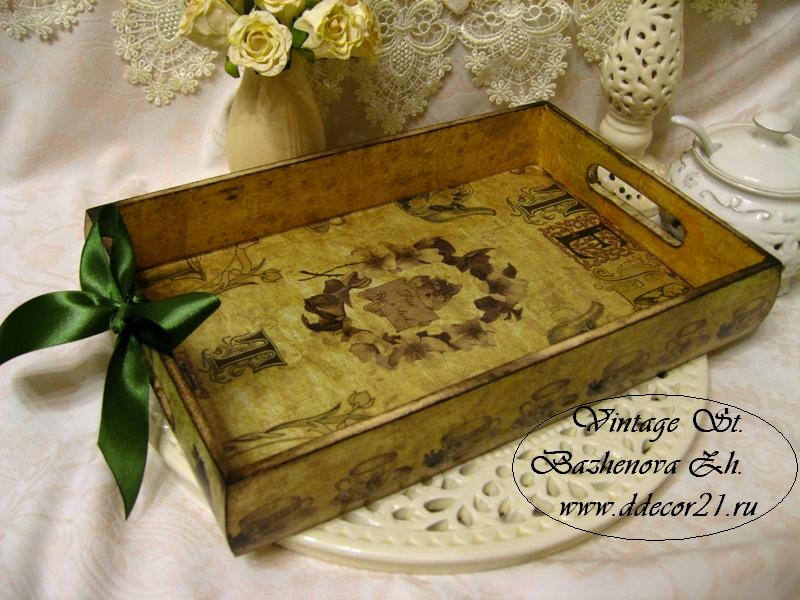
Tray coated with yacht varnish (decoupage card, imitation of aging with bitumen)
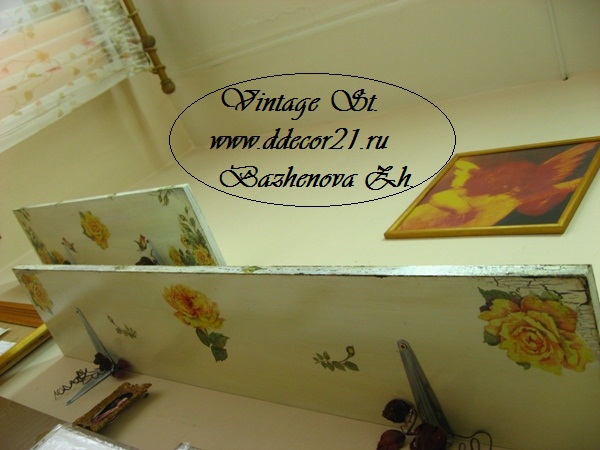
A set of shelves covered with yacht varnish (decoupage with rice paper, imitation of aging with craquelure varnish, bitumen)
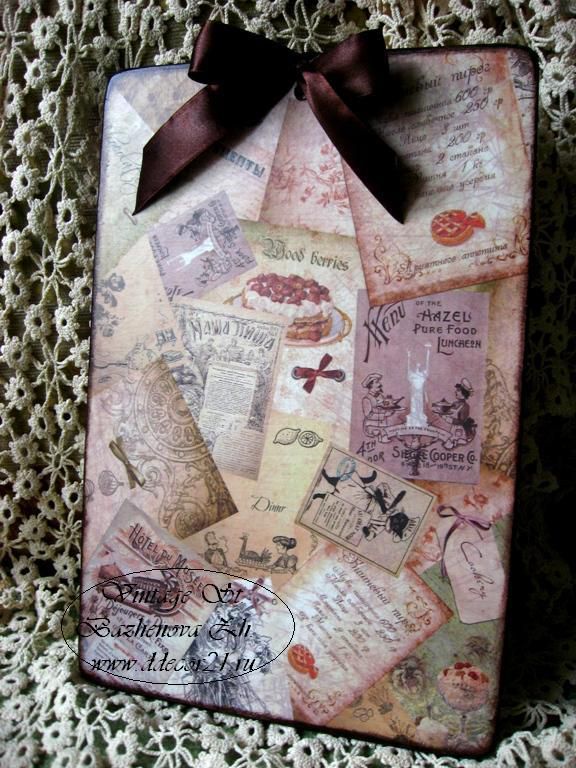
Cutting board coated with yacht varnish (decoupage with decoupage card, aging with bitumen)
3. The third guiding question. Do you want to see the presence of yellowness on your product? Is the amber tint produced by an alkyd-urethane composition appropriate? If yellow is appropriate, for example, when decorating in a vintage style, then I will again choose yacht varnish.
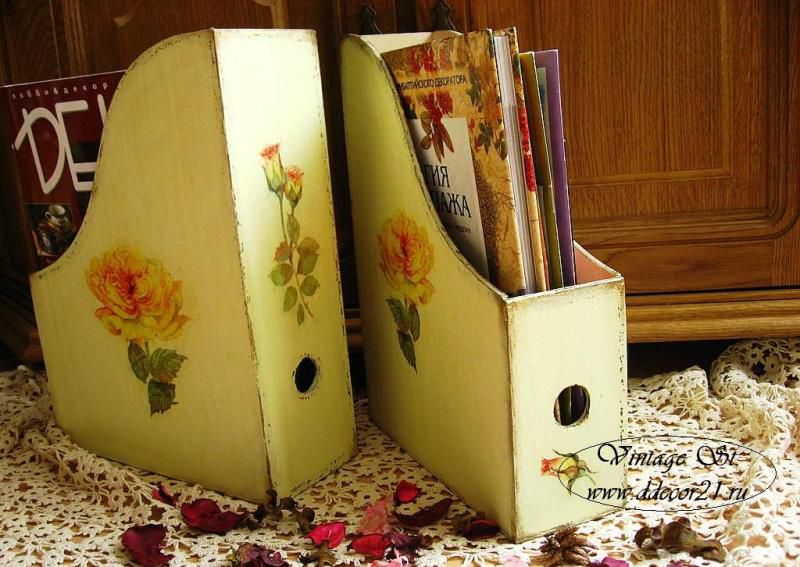
A set of journal cases coated with yacht varnish (decoupage with rice paper, imitation of aging using dry brush method)
Where to use acrylic urethane varnish (which is odorless and yellowish)?
Since I am offering my experience in using finishing varnishes, it turns out that this varnish is used only on boxes in combination with craquelure from Maymeri 753-754 and decorative coating with decoupage card, where yellowness is inappropriate. We love POLY-R parquet varnish as decoupage artists. I like this composition too.
Let me remind you of some properties and characteristics of POLY-R parquet varnish (aqua varnish with polyurethane):
. without smell;
. dissolves in water;
. dries quickly on the surface;
. without yellowness;
. excellent protective properties.
This varnish is suitable for products that are actively and often used in everyday life (kitchen boards, furniture), decorative products (boxes, panels, jewelry). 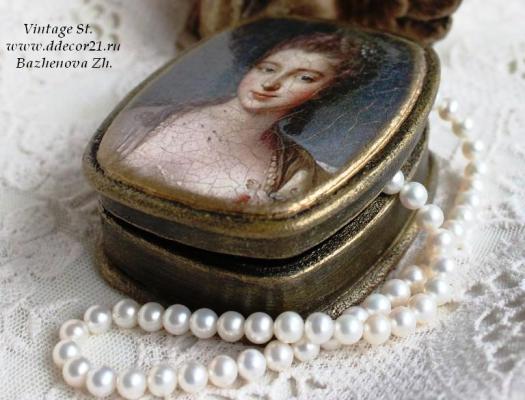
The surface of the lid of the box with craquelures 753-754 from Maymeri, coated with POLY-R (decoupage with printing, imitation aging, gilding, patination). The sides of the box are coated with a special acrylic varnish for decoupage.
How to choose yacht or parquet varnish?
I propose criteria own choice:
- matte - glossy;
- price quality;
- amount of varnish in the package.
1. Matte or glossy varnish - choose based on the samples on the palette in the store.
2. Price - quality. For example, varnish from a Yaroslavl manufacturer is one of the most inexpensive varnishes that has proven itself in practice. If the first criterion is quite suitable (for example, the degree of matte), then, of course, preference is given to this particular varnish.
How and with what to apply yacht varnish (which has a smell)?
I prefer to apply this varnish with a foam brick sponge or a piece of sponge if the coverage area is small. Hands are protected with cellophane gloves. I do not apply this varnish with a brush. Why?
Firstly, it’s more convenient for me to apply the composition more evenly (it’s quite viscous).
Secondly, it’s not a pity to throw away the sponge, unlike the brush, after each use.
Thirdly, there is no stage of “fussing” with solvents when washing the brush and inhaling harmful and very smelly fumes from them (by the way, this stench persists indoors for a very long time and for some reason irritates everyone in the household).
How to decide on a choice: glossy or matte varnish? Why?
Of course, this is not just a matter of taste. Main landmark:
If the item is made in a vintage style, with signs of “age,” it is definitely matte or silky-matte. Although silky matte sometimes looks like a 100% glossy varnish... What to do? Again, carefully study the palette in the store and, based on your own experience, take only the composition that says “matte”.
Main conclusions on the use of yacht and parquet varnishes:
1. Yacht and parquet varnishes (alkyd-urethane - odorless and acrylic-urethane - odorless) - excellent compositions for reliable and durable protection of decoupage on decorative and household products.
2. Guiding questions in the final choice of varnish:
- Is the product intended for indoor or outdoor use?
-Will the item be located in a wet or dry area?
- How often will the product be exposed to various liquids?
- Is yellowness appropriate on the product?
3. If the item is made in a vintage style or in combination with aging techniques (crackle, shabby, etc.), then when choosing between glossy, matte and silky-matte composition, choose matte varnish.
Decoupage: how to choose a finishing varnish -3. About protective varnish in spray.
Website about decoupage by Evgenia Bazhenova http://ddecor21.ru/
This is the third video of three about finishing varnishes in decoupage
From the video you will learn about the 3rd group of finishing varnishes (conditional division of the author): protective varnishes for interior and exterior work in a spray, alkyd-urethane, for example, growth-oleum. Description of composition:
- glossy and matte composition in spray (on synthetic resins);
- compositions with a smell;
- suitable for almost all surfaces;
- suitable for interior and exterior work;
- easy to use;
- compositions absolutely without yellowness;
- provide UV and wear-resistant coating (from scratches and chips).
The composition of varnishes is close in its performance to construction varnishes.
Varnishes are found in construction stores, special departments for creativity, online stores
The purpose of using varnishes of group 3:
. for decorative products;
. for products actively used in everyday life;
Suitable for finishing decoupage:
. napkins;
. especially after hot gluing the napkin;
. decoupage card;
. rice paper;
. printouts;
. V artistic decoupage using pastels, oil paints; (photo of a panel with angels)
. with craquelures; (photo of Ali's watch)
Application technology protective varnish watch in a separate video “Decoupage: finishing varnish and hot gluing of the motif” from 5 minutes 49 seconds
Main conclusions on the use of varnishes of group 3 (protective for interior and exterior use):
Great for decorative items and frequently used household items;
Reliably and for a long time protect decoupage and various decor from mechanical and thermal influences;
To protect decor in a vintage style or “with signs of age” such as abrasions, patination, craquelure, etc., when choosing between glossy and matte varnish, prefer a matte composition.
Recommendations for using finishing compositions for decoupage:
- choose a varnish based on the purpose of the future product;
- use strictly according to the instructions;
- use the formulations within the expiration date, do not dilute them;
- mix well (or shake before use)
- from larger capacity Pour into a smaller one before using.
The choice of finishing varnishes is varied and huge. These 3 videos contain the results of our own findings, guidelines for beginning decoupage artists.
Experiment! And you will find something of your own!
- carefully gluing the whole picture or its fragments so that in the end it looks like a single whole with the surface, like a picture painted by an artist.
After gluing the picture, the work must be varnished. The final varnish coating is often one of the most important processes in decoupage. The choice of varnish for decoupage is very important, and it is better to decide in advance what is needed for decoupage in each specific case.
The quality of this work affects appearance product and the duration of its operation. In addition, varnishing can correct some unevenness on the surface and achieve a perfectly smooth result.
Types of decoupage varnishes offered by the market
Let's take a look at the variety of varnishes offered by manufacturers.Varnish — This is a film-forming solution of synthetic or natural resins (or polymers) in organic solvents or water.
It is applied in thin layers to the surface to protect and give a decorative effect.
This material is mainly divided into groups according to composition, and in decoupage varnishes are also divided into finishing and decorative, used to age the product, giving it a certain shade or decorative effect.
There are varnishes that combine both functions, both finishing and decorative.
Decoupage varnish can be purchased both in construction and in specialized stores for creativity.
So what varnish should you use for decoupage?
Popular types of varnishes for decoupage and features of their use
Acrylic lacquerAcrylic (acrylate) varnish
Acrylic varnishes in decoupage are the most popular and their scope of application is by no means limited to just the finishing coating of the product. Acrylic varnish is non-toxic, non-flammable, odorless, as it is water-based, and has excellent elasticity and strength. It dries quickly by evaporating moisture and then has high moisture resistance and does not turn yellow over time.
Transparent acrylic varnishes are also used as a primer to protect intermediate layers in decoupage.
By doing decoupage with your own hands, you can add shine to colored acrylic paints. To do this, you need to dilute them with glossy varnish, or vice versa, mix them with matte. It dries quite quickly, but it will take about two weeks for the final formation of the protective layer.The main disadvantage of acrylic varnish is its dependence on the humidity of the room in which the work is carried out or the product coated with it is located. For normal drying, humidity should be at least 50%.
Acrylic varnish based on synthetic resins
Acrylic varnish in decoupage can be either water-based or synthetic resin-based. A universal varnish, it can be used on any surface, over oil and acrylic paints. Dries quickly - up to one and a half hours. Used for both interior and exterior work.
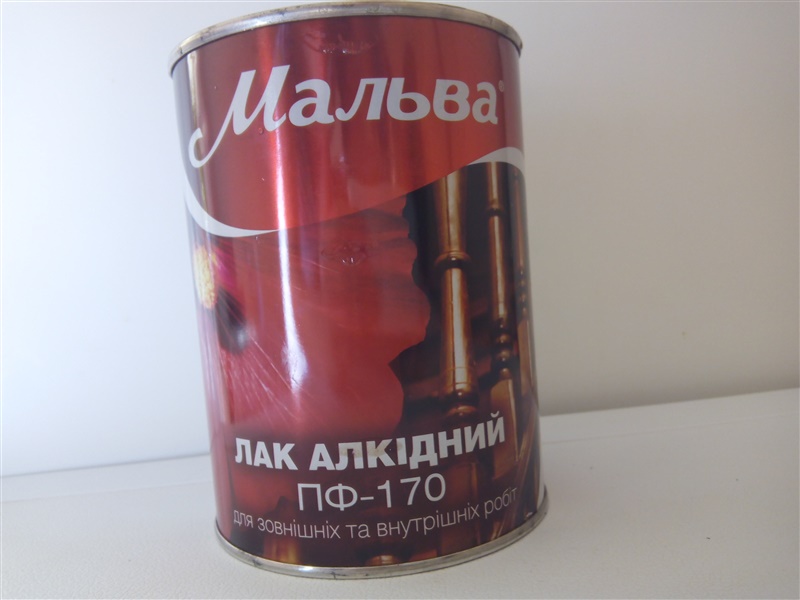 Alkyd varnish
Alkyd varnish Alkyd varnish
Along with acrylic alkyd varnishes in decoupage, they are also one of the most popular varnishes. Alkyd varnishes are produced on the basis of organic solvents and alkyd resins. The foam of alkyd varnish is more durable and hard than acrylic varnish.
It is suitable for both external and internal work. Not afraid of moisture, sun and cold. When applying, avoid getting moisture on the surface and do not inhale it, as solvent fumes are toxic.
Alkyd varnish for decoupage is perfect if you need to apply many layers, since 1 layer of alkyd varnish is equal in film density to 2 layers of water-based varnish.One of the main disadvantages is their for a long time drying time, up to 72 hours. Manufacturers add various hardeners to modern alkyd varnishes, which reduces drying time to 24 hours.
A variety of alkyd varnishes in decoupage are alkyd-urethane varnishes. They dry in 6-12 hours and form an even more durable film on the surface.
Polyurethane varnish
Polyurethane varnish is a fairly common type of varnish. They can cover almost any surface. It has increased wear resistance and is resistant to mechanical and chemical influences. Dries quickly (2-3 hours),
Polyurethane varnishes can be one-component, two-component (requiring a special preliminary primer, as a rule, such varnishes are sold in a set), and self-priming.
Water-based polyurethane varnish is a modern paint and varnish product. Combines the benefits of organic acrylic varnishes and wear resistance and drying speed of polyurethane.
The only drawback is the high cost of this decoupage varnish.
Oil varnish
Oil varnishes in decoupage are used to give a yellowish-brown tint to the final product when making decoupage with your own hands. The varnish is quite durable, consists of vegetable oils, resins and organic solvents. The drying period of the varnish is from several hours to several days. Suitable for interior use only, not resistant to atmospheric changes.
Oil varnishes are divided into groups depending on the percentage of oil content. Fatty oils - 65-80% oil content in the composition, this varnish is perfect for coating wood subject to mechanical damage (wooden floors, tools), metal (protects against corrosion).
Average – 55 -60%. Thin - 30-50%, such varnishes are suitable only for coating decorative items, since they practically do not protect the object; they are used to add shine. Wood coated with thin oil varnish for decoupage can be perfectly polished with alcohol to a shine.
Nitrolac
Nitrovarnishes are rarely used in decoupage. They have poor wear resistance, light resistance, and peel off over time. They are used in the production of products for which there are no requirements for durability. The undeniable advantage of this type of varnish is its low cost and quick drying (15-30 minutes). Varnish is toxic.
Polyester varnish
Polyester varnish for decoupage, as a rule, is not used due to its complexity of application. They are usually used to cover musical instruments and other products requiring a thick and glossy finish. The varnish is applied only from a spray bottle, it is very toxic.
Epoxy varnish
Epoxy varnishes, as a rule, are not used in decoupage, although they have high wear resistance and strength. The main disadvantage is their dependence on atmospheric changes and the drying period of up to 12 hours. This varnish is perfect for gluing objects.
Shellac varnish
The first varnish to appear was shellac; it is a natural resin secreted by insects, varnish bugs. Shellac is produced in India and Southeast Asia.
This type of varnish is quite expensive and requires adherence to a certain application technology, which complicates its use when making decoupage with your own hands. It gives a stunning gloss when dried and is used in the manufacture of antique furniture. Natural color– amber, but now they also make transparent.
Bitumen varnish
When drying, bituminous varnish forms a dark water-repellent film. In decoupage it is used to erase craquelure cracks and age the product. Great for an antique look metal objects. The varnish is not independent, it requires a finishing, more durable coating. It has a pungent odor and is diluted with solvent.Apply bitumen varnish with a brush and quickly remove excess with a cotton swab before it dries.
Craquelure varnish
Used to age products, to create cracks in top layer varnish This decorative look varnish There are one-step (one-component) and two-step (two-component) craquelure varnishes.
How to apply craquelure varnish correctly? One-component craquelure is applied between two contrasting layers of paint, where the first layer is the color of the cracks that have formed (when dry, the varnish breaks the second layer of paint, creating cracks of different shapes).
One-component varnishes are all water-based and do not have unpleasant odor, they can be used safely by allergy sufferers.
Two-component craquelure is applied, as a rule, at the final stage of surface decoration. The main difference between two-step and one-step craquelure is that the cracks are created in the varnish layer itself, and not in the paint. The advantage is that you can create a cracked effect on top of the decoupage.
We rub over any cracks that appear with oil paint, dry non-aqueous pigment or bitumen. Here's how to apply craquelure varnish correctly.
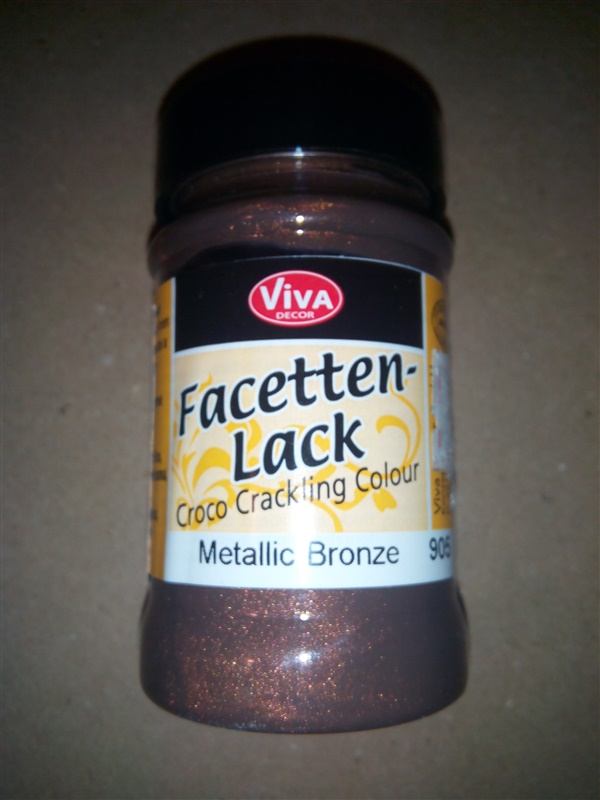 Faceted varnish
Faceted varnish Faceted varnish
Facet varnish is a type of craquelure. Faceted varnish is a water-based self-cracking acrylic varnish. After drying, it forms cracks. The varnish is produced in the form of a paste, which is applied to the surface using a 2-4 mm thick palette knife or sponge. The drying period is up to 24 hours, after which deep cracks form. The varnish is resistant to atmospheric changes and fading.
Vitreous varnish
Water-based glassy varnish for decoupage allows you to create a glossy, perfectly smooth coating that is resistant to mechanical and atmospheric influences and dries quickly. This is one of the few varnishes that is self-leveling, filling all surface irregularities and leaving a transparent, glass-like gloss. Dries quite quickly.
This type of varnish is very popular among craftsmen; the only drawback is its high cost and small volume.
Dammar varnish
Dammar varnish is not very common in decoupage. Its use is possible only if you used oil paints.
Dammar varnish is made from dammar resin and is ideal for coating paintings painted oil paints. The varnish creates a dense protective coating of an amber hue, turning yellow over time. Varnish gives colors brightness and shine.
Lac zapon
Zapon varnish is a mixture of dissolved nitrocellulose and artificial resins. The varnish is absolutely harmless to humans. You can cover any surface and can withstand large temperature changes.
Organic dyes can be added to this varnish, which is traditionally colorless, and the products can be coated with a tinted varnish.
It dries quickly, has a reasonable price, is universal, has increased strength films.
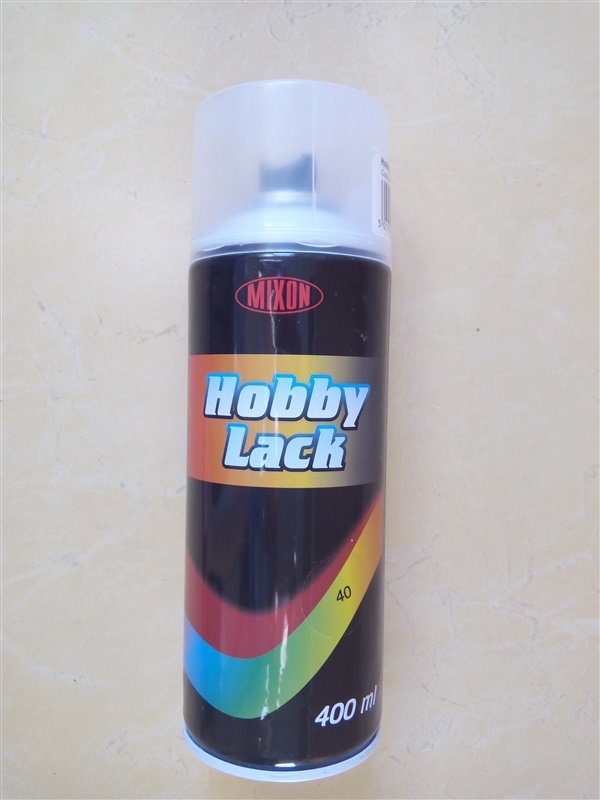 Nitro-alkyd aerosol varnish
Nitro-alkyd aerosol varnish Nitro-alkyd varnish
Nitro-alkyd varnish is an excellent coating for the product. Combines the advantages of two varnishes, which allows it to dry quickly and create a durable film that is resistant to increased mechanical impact. Nitro-alkyd varnishes are sold in aerosol cans, which allows you to evenly cover the object, is toxic, work in a ventilated area, after drying the smell disappears.
Porcelain varnish
Porcelain varnish is intended for coating dishes that will come into contact with food. Suitable for coating glass and porcelain. Manufacturers position it as food grade.
We looked at the main types of decoupage varnishes that can be used. It often happens that after studying a lot of material, we select varnishes, coat the product, and over time it begins to stick, turn yellow, and the varnish begins to peel off. Whitish spots appear. “What did we do wrong?”
The main mistakes when finishing with varnish
Do-it-yourself decoupage is a task that requires attention and accuracy. In order to avoid mistakes that could lead to problems in the future, let's consider the main ones:
- After drying, the varnished surface becomes sticky
Poor quality varnish can lead to this. When deciding which varnish to use for decoupage, it is better to choose trusted manufacturers or test it first.
You need to carefully study the purpose of the varnish - if it is intended to cover wood, but was used for glass, then stickiness may be one of the consequences of improper use of the varnish.
Be sure to thoroughly prepare the surface before coating; roughness, dust, and grease can cause unwanted stickiness.
Stir the varnish thoroughly before each use.
- Varnish turns the product yellow over time
Here the main reason will be either low-quality varnish or incorrectly chosen one. If you want to transparent coating, without yellowness, then avoid patina-based or oil-based varnishes. Patina is used to age products and its addition to varnish causes the coating to turn yellow.
- Varnish is peeling or peeling
The main reason for varnish peeling may be the primer or intermediate layers of varnish that have not dried completely. The resulting moisture promotes peeling of the varnish. Rolling may occur from use different types varnishes
- Decoupage varnish is pressed through
If, after the varnish has dried, pressure on the nail leaves a mark on the surface, it means that the layers have not dried completely and this can subsequently cause the varnish to peel off. The most important thing when choosing a varnish is to study its description so that it meets your requirements and check the expiration date.
In addition, you will be interested in an article about, which will help you understand this issue in detail in order to prevent this from happening in your work.
How to choose a varnish for decoupage?
Available on the market a large number of finishing varnishes, every day more and more new types appear, and previous brands are improved. If it’s difficult for you to decide how to choose a varnish for decoupage, you can seek advice from the seller, telling him about:
- what item will you cover (metal, glass, wood, plastic),
- where (indoors or outdoors),
- what result do you expect (glossy, matte or semi-matte finish),
- what toxicity and wear resistance should the decoupage varnish have (whether the item will be used in everyday life or has a decorative function).
- and finally, what price category Are you interested?
Based on your wishes, the seller will determine which varnish to use for decoupage in your case.
Today in stores you can find a huge selection of varnishes, both artistic and construction. And of course, a lot of questions arise: which varnish is better to choose, how to use it, how to store it, what to apply it, etc. In this article we will try to answer most of them. We will deliberately not indicate companies and names of varnishes - you yourself can choose those that suit you in terms of price and quality.
Functions of varnish in decoupage:
1. Protective function - varnish and are used as finishing to protect the finished product from exposure environment- dirt, moisture, scratches, etc.
2. Many decoupage artists use varnish to glue motifs onto the workpiece.
3. Varnish and are also used to mask the border of the motif to remove the “step” between the edge of the motif and the base. To do this, apply several layers of varnish and dry each layer well, and the convex parts are processed sandpaper to level the entire surface. The procedure is repeated until ideal smoothness to the touch is achieved.
4. If you plan to tint the background of the work after gluing the motif or draw shadows, the motif must be protected with varnish. Paint can be easily removed from a varnished surface if you accidentally touch the picture.
5. If your product involves a lot fine workmanship, various decorative effects, it is recommended to fix each completed layer with varnish to make it easier to correct possible mistakes and shortcomings. This especially applies to working with glass and plastic.
6. The actual decorative effects themselves (craquelure, three-dimensional elements, patination) are also often made using special varnishes.
7. Varnishes are also used to prepare motifs for decoupage - printouts are varnished on top, and napkins can be reverse side Spray with spray varnish to make them stronger.
8. Varnishes can also be used for priming some absorbent surfaces (MDF, fiberboard, chipboard, ceramics, etc.), as well as, conversely, smooth surfaces (glass, plastic) to increase adhesion.
9. Tinted varnishes can be used independently for decorating products (for example, for processing internal surfaces boxes, boxes, tea houses, etc.).
10. Some types of varnishes can be used as solvents or binders when creating decorative compositions.
Types of varnishes used in decoupage:
1. Acrylic and acrylate varnishes
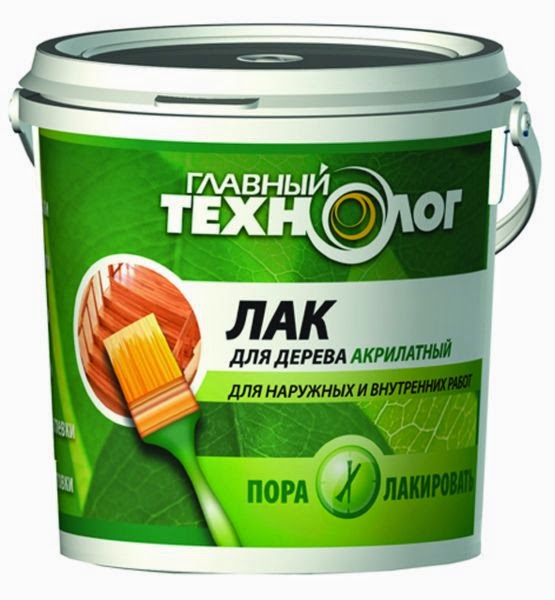
The most commonly used in decoupage. Suitable for almost all purposes listed above. They dry quickly enough to form a dense, indelible film; when thickened, they are easily diluted with water. Acrylate varnish differs from acrylic only in additives that make it more elastic. Acrylate varnish is even better for preparing prints. Tools can be easily washed with water after using acrylic varnishes. detergent or soap.
2. Polyurethane varnishes
Polyurethane varnishes are water-based and non-water-based. The latter give more lasting 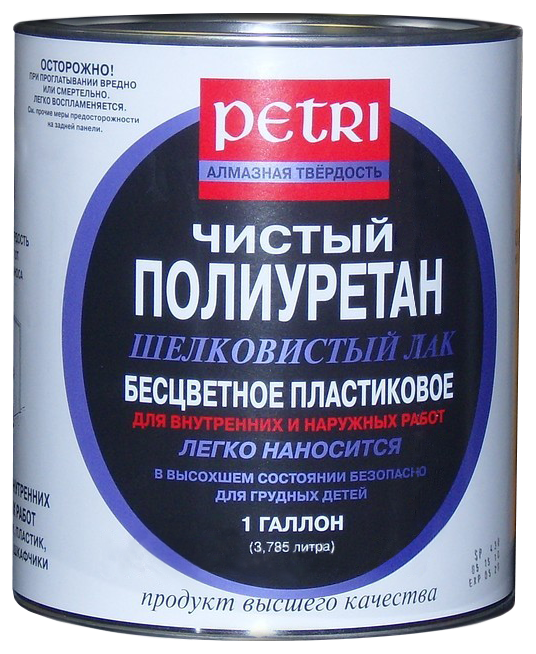 coating, but for reasons of safety and environmental friendliness, decoupage artists often use the former. Polyurethane varnish (for example, for baths and saunas) perfectly protects against moisture, so it is often used for products that will subsequently come into contact with water (cutting boards, trays, hangers and bathroom boxes, street signs and so on.). After working with polyurethane varnish, wash the brushes in soap and water (water-based varnishes) or in a special solvent (non-aqueous varnishes). We pay special attention: polyurethane varnishes dry quite quickly, but fully “gain” their properties within a few days, so work coated with such varnish must be left standing before using them.
coating, but for reasons of safety and environmental friendliness, decoupage artists often use the former. Polyurethane varnish (for example, for baths and saunas) perfectly protects against moisture, so it is often used for products that will subsequently come into contact with water (cutting boards, trays, hangers and bathroom boxes, street signs and so on.). After working with polyurethane varnish, wash the brushes in soap and water (water-based varnishes) or in a special solvent (non-aqueous varnishes). We pay special attention: polyurethane varnishes dry quite quickly, but fully “gain” their properties within a few days, so work coated with such varnish must be left standing before using them.
3. Alkyd varnishes
Alkyd varnishes (for example, parquet or yacht varnishes) provide a very dense, stable coating.
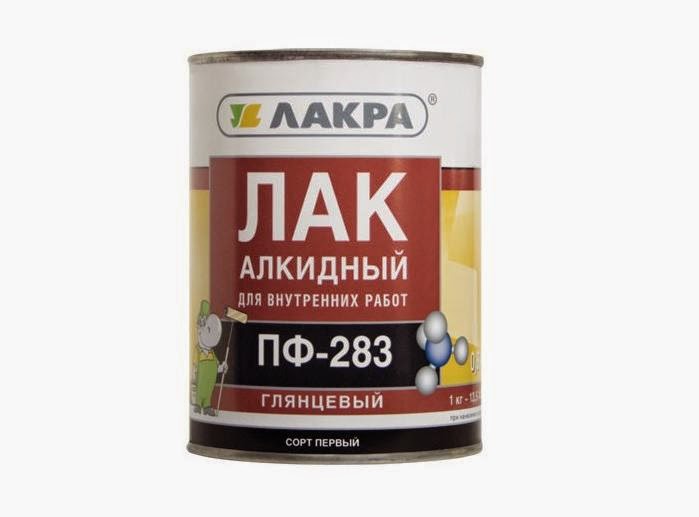
To the rude external influences. That is why alkyd varnishes are most often used to coat products that will be used “mercilessly” (keychains, “street” items). Alkyd varnishes are not recommended to be dried with a hairdryer; they may
behave very unpredictably (give yellowness, stains, bubbles, crack), and under natural conditions they dry for a long time (from 2 hours to several days depending on the thickness of the layer and the humidity in the room), so be patient. The result is really worth it! Brushes after alkyd varnishes are difficult to wash and only in special solvents (see instructions for the varnish), so I recommend using either disposable inexpensive brushes/rollers that you don’t mind throwing away, or buying alkyd varnish in spray form.
4. Decorative varnishes
As the name suggests, these are varnishes for creating decorative effects- craquelure varnishes, bitumen varnish, beveled varnish and others. We will make a separate review on them, so we won’t
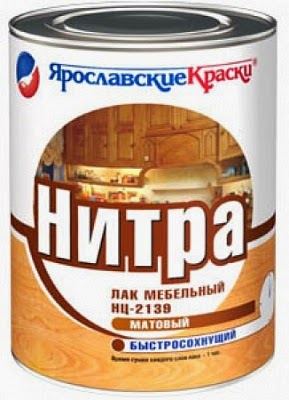
Go into detail here.
5. Nitrolac
Nitrovarnish, like alkyd varnishes, is used for products that will be exposed to rough external influences. The advantage of nitro varnish is that it dries quickly (from 20 minutes to an hour). But it is very smelly and harmful to health, so we recommend working with it only in a special mask or respirator and in a well-ventilated area.
6. Tsapon
We have placed the capon in a separate section because it has one important property - heat resistance. They cover products that will then be exposed to
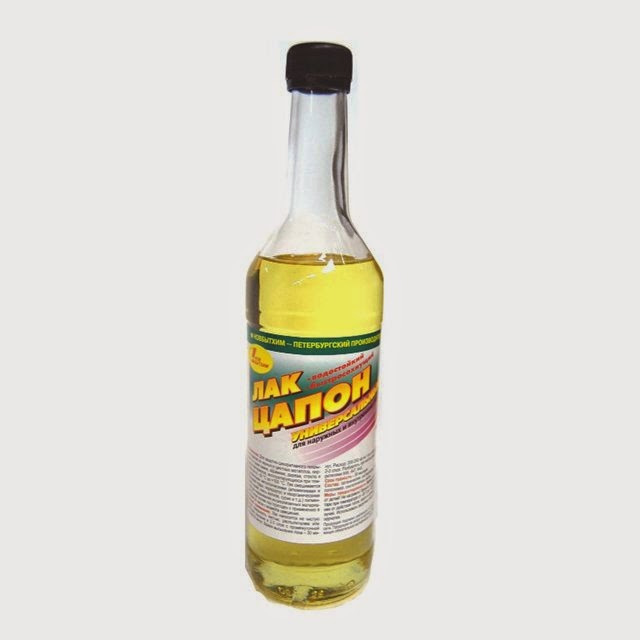
High temperatures (for example, hot pads). In principle, Tsapon is a universal varnish; it can also be used simply as a finishing varnish, especially for complex weather conditions(instead of alkyd or nitro varnish). It is significantly cheaper, easier to apply, and diluted with acetone. Tsapon smells, you need to work with it in a ventilated area. The brushes are washed first with a solvent (you can just use white spirit), and then with soap and water.
7. Vitreous varnish
Vitreous varnish gives a durable elastic film,
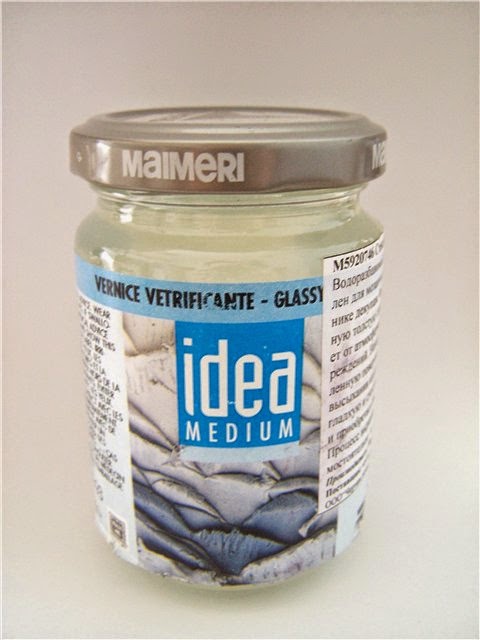
It is resistant to abrasion, so it is often used by decoupage artists to cover passport covers, wallets, notepads and other natural and artificial leather products that are expected to be bent, rubbed and simply removed from the bag frequently. In addition, the glassy varnish is high-gloss and can be used as a finish when a perfectly smooth, shiny surface is required, and it can be difficult to epoxy resins I do not want. The varnish is easily diluted with water, and tools are also easily washed with water and detergents. Vitreous varnish has only 2 drawbacks: high price and “capriciousness” under conditions of transportation and storage (for example, it does not like cold and can change its properties).
8. Shellac varnish
Shellac is a decorative varnish used for patination finished products, revealing color depth, especially when working with metallic paints. Shellac varnish
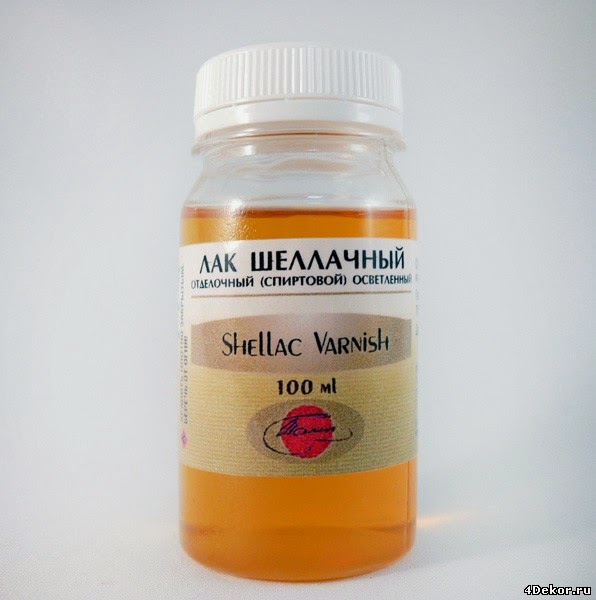
Also used for fixing bitumen and gold leaf. Often used for woodworking, it emphasizes the natural structure of wood and adds a soft shine without creating a varnish film. When working with shellac, brushes should be kept in alcohol; tools should also be washed first with alcohol and then with soap and water. It dries quickly enough, has almost no odor and evaporates easily.
Varnishing tools:
1. Brush
We devoted a separate article to brushes, where we examined in detail the methods of working and caring for them after varnishing, so we will not dwell on this point.
2. Roller
Foam rollers are most often used for varnishing. We recommend choosing rollers made of denser foam rubber: the greater the porosity, the greater the absorption and consumption of varnish.
3. Foam sponges and sponges
Sponges are most often used for spot application of decorative varnishes (for example, bitumen) or when working with stencils.
4. Special tampons
To work with non-aqueous varnishes, for the sake of convenience and economy, you can make special tampons. This will be discussed in detail in one of our future publications.
5. Palette knife
Some types of varnishes (for example, beveled or varnishes for 3D effects) can be applied and leveled with a palette knife.
Like this short review we succeeded. In the next publication we will look in detail finishing varnishes and their use depending on the operating conditions of decoupage products.








